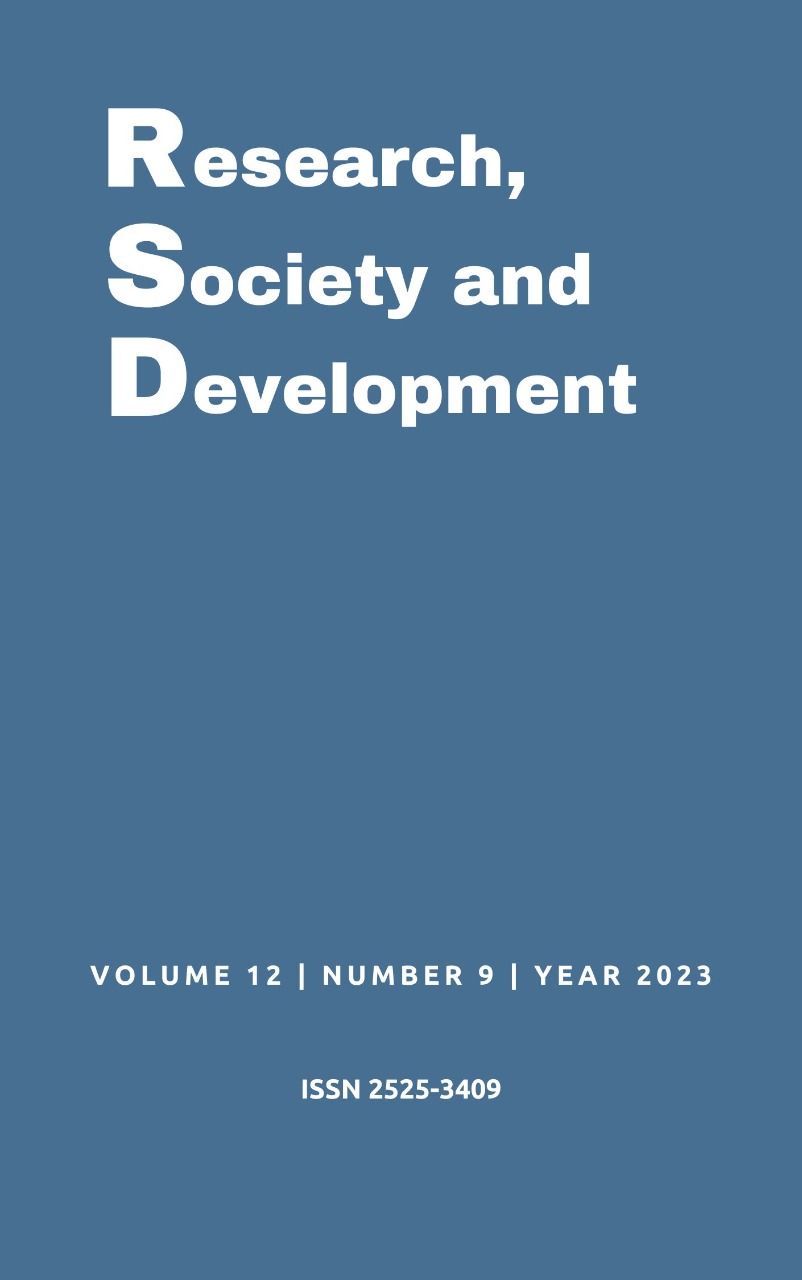Bases of topical treatment in toxic Epidermal Necrolysis and Stevens-Johnson Syndrome: A scientific review
DOI:
https://doi.org/10.33448/rsd-v12i9.43293Keywords:
Stevens-Johnson Syndrome; Burn units; Ointments; Bandages; Biological dressings.Abstract
This paper aims to analyze the basis of topical treatment in toxic epidermal necrolysis and Stevens-Johnson syndrome, both severe and rare diseases characterized by necrosis of the epidermis and mucous membranes. Topical treatment is an important option to relieve symptoms and reduce the risk of infections. This includes the use of creams and ointments to promote pain and inflammation relief, and dressings to protect the skin and mucous membranes. To broaden the discussion, aspects such as the characteristics of toxic epidermal necrolysis and Stevens-Johnson syndrome, the types of topical treatment available, the benefits and challenges of topical treatment and the implications for patients' health will be addressed. In order to reach these topics, articles were collected in the PUBMED, LILACS and SCIELO databases, during the month of July 2023 and an analysis was carried out with firm criteria from the material found to be able to explain the relevant information to the theme. It is concluded in this work that the use of topical methods for the treatment of such syndromes can be of paramount importance, especially when it comes to symptom relief and agility in recovery. However, there is a need for a greater number of randomized and multicenter studies that can enrich research on the topic.
References
Allen H. S., & Koch S. L. (1942). The treatment of patients with severe burns. Surg Gynec Obstet, 79: 914, 1942.
Almeida, R. G., Deutsch, G. & Nogueira, T. A. (2021). Avaliação Dos Curativos Padronizados em um Hospital: Importância Para Dispensação e Manejo em Feridas. InterSciencePlace, 16(4).
Borchers, A. T. et al. (2008). Stevens–Johnson syndrome and toxic epidermal necrolysis. Autoimmunity Reviews. 7(8), 598-605.
Coelho, I. D. (2013). Síndrome de Stevens-Johnson e necrólise epidérmica tóxica. Tese de Doutorado. Universidade De Coimbra.
Dalmedico, M. M. et al. (2021). Efetividade da terapia larval na cicatrização de feridas complexas: overview de revisões sistemáticas. Rev Gestão e Saúde. 23(1), 146-58.
Emerick, M. F. B. et al. (2014). Síndrome de Stevens-Johnson e necrólise epidérmica tóxica em um hospital do Distrito Federal. Revista Brasileira de Enfermagem. 67, 898-904.
Estrella-Alonso, A. et al. (2017). Necrolisis epidérmica tóxica: un paradigma de enfermedad crítica. Revista Brasileira de Terapia Intensiva. 29(1), 499-508.
Levy, A. F., Karnikowski, M. R. & Campos, L. C. E. (2014). Síndrome de Stevens-Johnson e Necrólise Epidérmica Tóxica. Acta Méd (Porto Alegre). 35(7).
Ministério da Saúde (BR). (2019). Agência Nacional de Vigilância Sanitária. Farmacopeia Brasileira. (6a ed.), ANVISA.
Mahar, P. D. et al. (2014). Comparing mortality outcomes of major burns and toxic epidermal necrolysis in a tertiary burns centre. Burns, 40(8), 1743-1747.
Meira Junior, J. D. de. et al. (2015). Necrólise epidérmica tóxica/síndrome de Stevens-Johnson: emergência em dermatologia pediátrica. Diagnóstico & Tratamento. 20(1), 8-13.
Oliveira, A., Sanches, M., & Selores, M. (2011). O espectro clínico síndrome de Stevens-Johnson e necrólise epidérmica tóxica. Acta Médica Portuguesa. 24(1), 995-1002.
Pereira, A. L. et al. (2006). Revisão sistemática da literatura sobre produtos usados no tratamento de feridas. Tese Mestrado. Universidade Federal de Goiás.
Roviello, C. F. et al. (2019). Manifestações e tratamento da necrólise epidérmica tóxica e da síndrome de Stevens Johnson/Manifestations and treatment of toxic epidermic necrolysis and Stevens Johnson's syndrome/Manifestaciones y tratamiento de la necrolisis epidérmica tóxica.. Journal Health NPEPS. 4(1) 319-329.
Rocha, L. P. S. (2018). Relato de caso e revisão da literatura de síndrome de Stevens-Johnson associada a episódio de varicela. Arquivos Catarinenses de Medicina. 47(3), 226-234.
Santos Neto, F. C. et al. (2023). Abordagem cutânea na necrólise epidérmica tóxica. Revista Brasileira de Cirurgia Plástica, 32(1), 128-134.
Scheldler, J. C. & Carvalho et al. (2021). Fotobiomodulação na síndrome de stevens-johnson: relato de caso. Rev. méd. Minas Gerais, p. e0032.
Serra, F. L. O. et al. (2012). Necrólise epidérmica tóxica e síndrome de Stevens Johnson: atualização. Revista Brasileira de Queimaduras, 11 (1), 26-30.
Souza, M. C. A. et al. (2018). Síndrome de stevens-johnson e necrólise epidérmica tóxica: relato de caso. Acta Biomedica Brasiliensia, 9(1), 184-190.
Wong, A., Malvestiti, A. A. & Hafner, M. F. S. (2016). Stevens-Johnson syndrome and toxic epidermal necrolysis: a review. Revista da Associação Médica Brasileira, 62(1), 468-473.
Downloads
Published
How to Cite
Issue
Section
License
Copyright (c) 2023 Renata Maria Visniewski Ximenes; Bruno Barreto Cintra; Sabryna Silveira Campos; Layanne Liege Domingos Galindo

This work is licensed under a Creative Commons Attribution 4.0 International License.
Authors who publish with this journal agree to the following terms:
1) Authors retain copyright and grant the journal right of first publication with the work simultaneously licensed under a Creative Commons Attribution License that allows others to share the work with an acknowledgement of the work's authorship and initial publication in this journal.
2) Authors are able to enter into separate, additional contractual arrangements for the non-exclusive distribution of the journal's published version of the work (e.g., post it to an institutional repository or publish it in a book), with an acknowledgement of its initial publication in this journal.
3) Authors are permitted and encouraged to post their work online (e.g., in institutional repositories or on their website) prior to and during the submission process, as it can lead to productive exchanges, as well as earlier and greater citation of published work.

